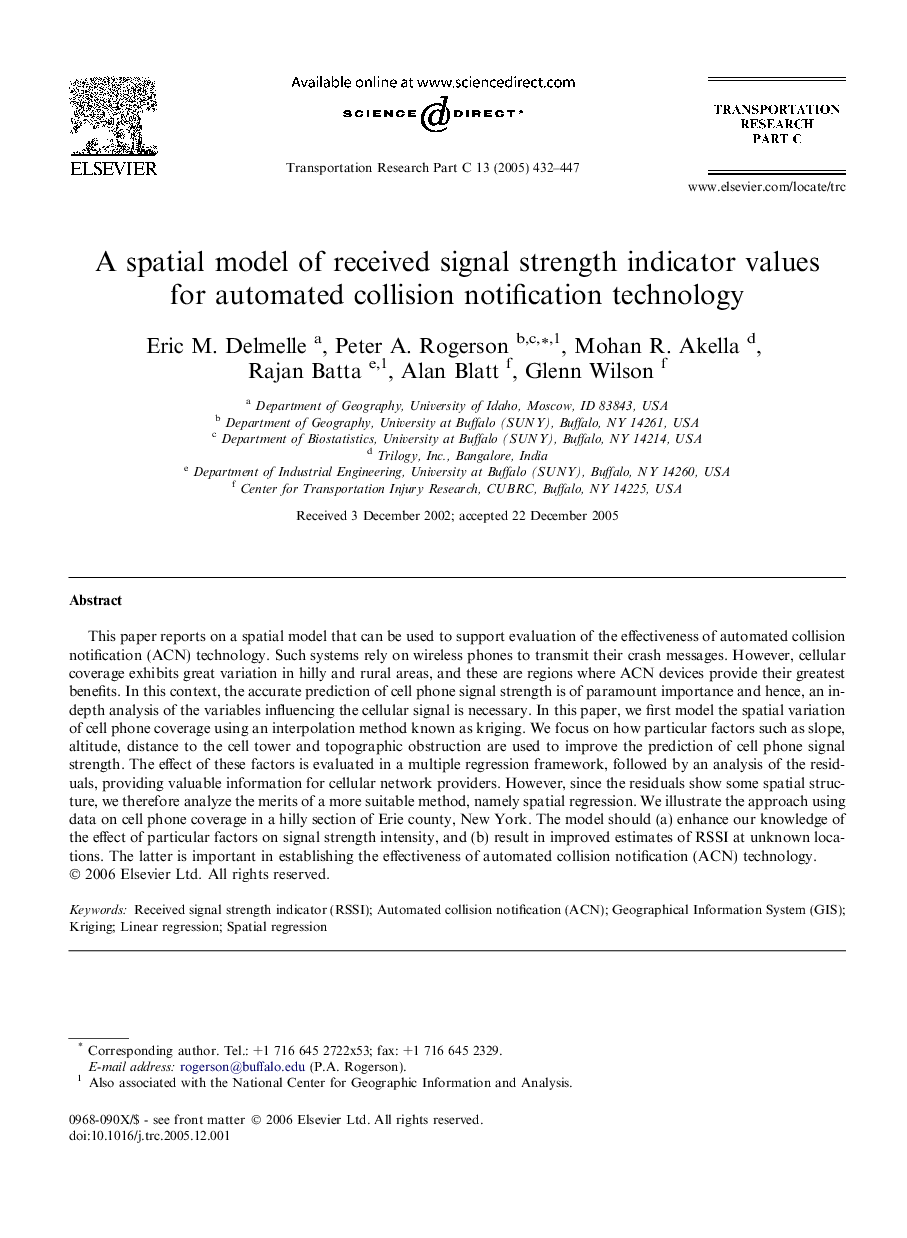| Article ID | Journal | Published Year | Pages | File Type |
|---|---|---|---|---|
| 9669511 | Transportation Research Part C: Emerging Technologies | 2005 | 16 Pages |
Abstract
This paper reports on a spatial model that can be used to support evaluation of the effectiveness of automated collision notification (ACN) technology. Such systems rely on wireless phones to transmit their crash messages. However, cellular coverage exhibits great variation in hilly and rural areas, and these are regions where ACN devices provide their greatest benefits. In this context, the accurate prediction of cell phone signal strength is of paramount importance and hence, an in-depth analysis of the variables influencing the cellular signal is necessary. In this paper, we first model the spatial variation of cell phone coverage using an interpolation method known as kriging. We focus on how particular factors such as slope, altitude, distance to the cell tower and topographic obstruction are used to improve the prediction of cell phone signal strength. The effect of these factors is evaluated in a multiple regression framework, followed by an analysis of the residuals, providing valuable information for cellular network providers. However, since the residuals show some spatial structure, we therefore analyze the merits of a more suitable method, namely spatial regression. We illustrate the approach using data on cell phone coverage in a hilly section of Erie county, New York. The model should (a) enhance our knowledge of the effect of particular factors on signal strength intensity, and (b) result in improved estimates of RSSI at unknown locations. The latter is important in establishing the effectiveness of automated collision notification (ACN) technology.
Keywords
Related Topics
Physical Sciences and Engineering
Computer Science
Computer Science Applications
Authors
Eric M. Delmelle, Peter A. Rogerson, Mohan R. Akella, Rajan Batta, Alan Blatt, Glenn Wilson,
